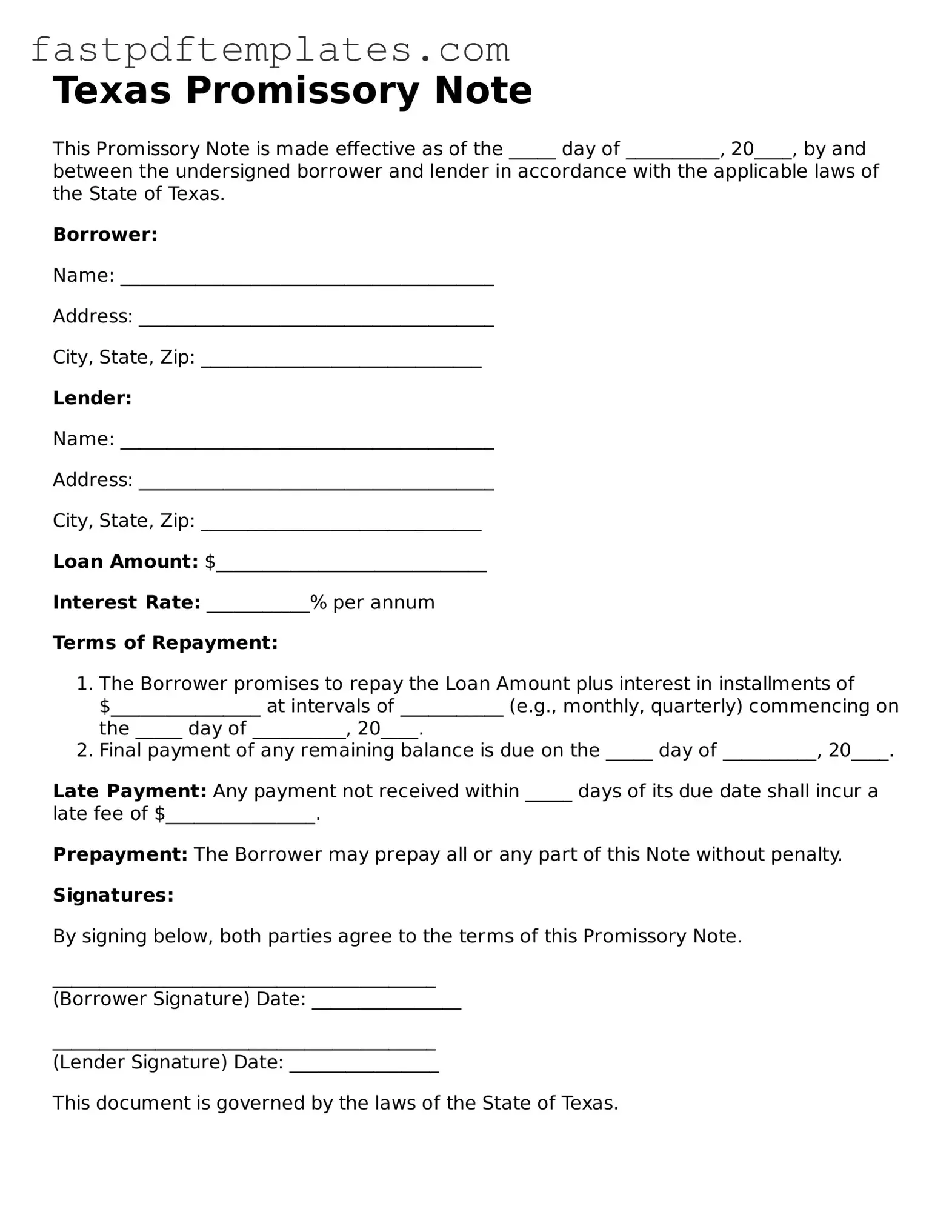Texas Promissory Note
This Promissory Note is made effective as of the _____ day of __________, 20____, by and between the undersigned borrower and lender in accordance with the applicable laws of the State of Texas.
Borrower:
Name: ________________________________________
Address: ______________________________________
City, State, Zip: ______________________________
Lender:
Name: ________________________________________
Address: ______________________________________
City, State, Zip: ______________________________
Loan Amount: $_____________________________
Interest Rate: ___________% per annum
Terms of Repayment:
- The Borrower promises to repay the Loan Amount plus interest in installments of $________________ at intervals of ___________ (e.g., monthly, quarterly) commencing on the _____ day of __________, 20____.
- Final payment of any remaining balance is due on the _____ day of __________, 20____.
Late Payment: Any payment not received within _____ days of its due date shall incur a late fee of $________________.
Prepayment: The Borrower may prepay all or any part of this Note without penalty.
Signatures:
By signing below, both parties agree to the terms of this Promissory Note.
_________________________________________
(Borrower Signature) Date: ________________
_________________________________________
(Lender Signature) Date: ________________
This document is governed by the laws of the State of Texas.
